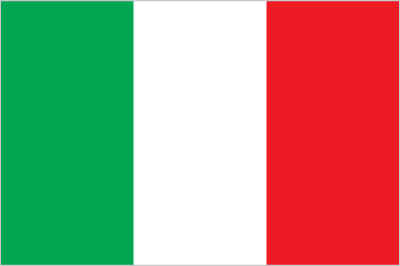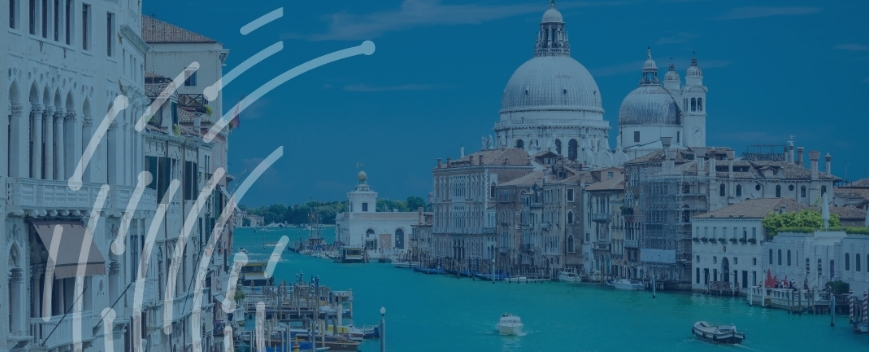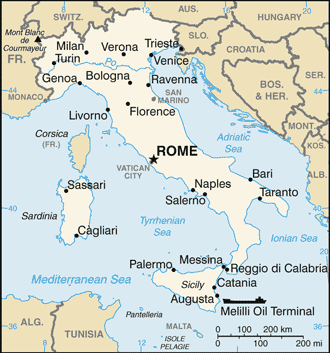Exporting to Italy


Italy Country Profile
Official Name (Local Language) Repubblica Italiana
Capital Rome
Population 62,007,540
Currency Euro
GDP $1,852 billion
Languages Italian
Phone Dial In 39
Italy Imports Profile
Imports ($m USD) 451,416
Number of Import Products 4,537
Number of Import Partners 208

Italy Economic Statistics
Government Website | https://www.governo.it/ |
| Sovereign Ratings | https://countryeconomy.com/ratings/italy |
| Central Bank | Banca d’Italia |
| Currency USD Exchange Rate | 0.9214 |
| Unemployment Rate | 11.4% |
| Population below poverty line | 29.9% |
| Inflation Rate | -0.2% |
| Prime Lending Rate | 0.25% |
| GDP | $1,852 billion |
| GDP Pro Capita (PPP) | $36,300 |
| Currency Name | Euro |
| Currency Code | EUR |
| World Bank Classification | High Income |
| Competitive Industrial Performance | 44/138 |
| Corruption Perceptions Index | 54/180 |
| Ease of Doing Business | 51/190 |
| Enabling Trade Index | 36/136 |
Access trade, receivables and supply chain finance
We assist companies to access trade and receivables finance through our relationships with 270+ banks, funds and alternative finance houses.
Get StartedExporting to Italy
Although there is little in the way of energy products such as oil or metals and minerals required in manufacturing, this is where the majority of Italian imports are focused. In the most recent annual figures, about $465 in crude petroleum imports ($43.5 billion), petroleum gas ($26.8 billion) and cars ($20.3 billion) topped the list with raw materials making up much of the balance along with food, textiles and clothing.
Italy’s mountainous terrain means the land is unsuitable for mass agriculture and so imports mainly support the manufacturing sector, dominated by automobiles and machinery. Main trading partners include Germany, France, China and the Netherlands.
Exporting to Italy: What is trade finance?
Export finance is a revolving facility which lenders offer – it enables SMEs to buy stock and can help ease the pressure from cash flow issues.
Typically, a trade finance bank will fund most of the cost of the goods, including charges (e.g. delivery costs).
Trade finance offers upsides over more traditional bank finance such as asset finance or loans. Trade finance provides up front funding without affecting existing relationships with banks.
How does it work?
If you’re a business importing or exporting stock supplies around the world, then a trade finance facility would assist your company to fund this through offering a letter of credit (LC) or some form of cash advance.
I’m looking to export to Italy, how can Trade Finance Global help, and how does it work?
If you are looking to export inventory to other international markets, you may require finance for exporting, which is a commercial agreement between yourself (the exporter), and the importer. An alternative finance bank will advance you the cost of producing the stock that you are exporting (as a debt instrument), either once you have sent the goods, or before producing them. Once your foreign importer has received the inventory and pays you for the import, you will repay the advance from the export funder over an agreed period.
Chart Showing GDP Growth Compared to rest of world
GDP Composition for Italy
Agriculture
2.2%
Fruits, vegetables, grapes, potatoes, sugar beets, soybeans, grain, olives; beef, dairy products; fish
Industry
23.9%
Tourism, machinery, iron and steel, chemicals, food processing, textiles, motor vehicles, clothing, footwear, ceramics
Services
73.8%
Map
Top 5 Import Partners
| Country | Trade | % Partner Share |
| Germany | 73,735 | 16.33 |
| France | 39,637 | 8.78 |
| China | 32,020 | 7.09 |
| Netherlands | 25,399 | 5.63 |
| Spain | 23,893 | 5.29 |
Top 5 Import Products
| Export Product | Number |
| Petroleum oils and oils obtained from bituminou | 6.9% |
| Automobiles with diesel engine displacing more | 5.8% |
| Natural gas in gaseous state | 3.5% |
| Other medicaments of mixed or unmixed products, | 3.4% |
| Petroleum oils, etc, (excl. crude); preparation | 1.9% |
Local Partners
- All Topics
- Italy Trade Resources
- Export Finance & ECA Topics
- Local Conferences



















